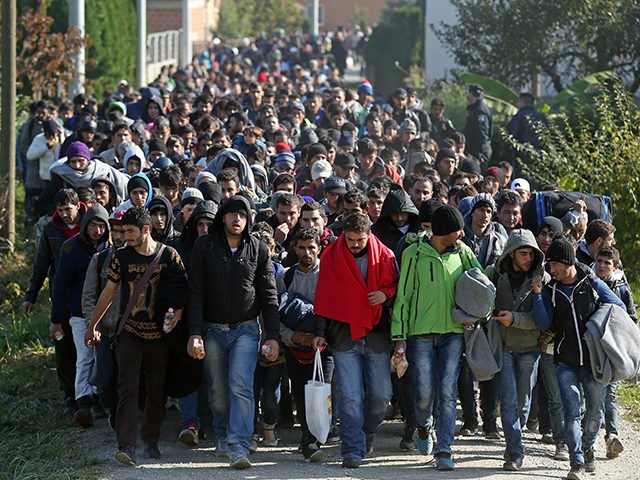Only 75,000 of the 2.2 million people who sought asylum in Europe in 2015 and 2016 have been deported to their homelands after their claims were rejected, a report has found.
More than half of the people who arrived during the migrant surge are still waiting for decisions on their asylum status, whilst those rejected are far more likely to “disappear” than be deported, according to a systematic study by the Pew Research Center.
Just eight per cent of asylum applicants in 2015 and 2016 had their claims definitively rejected, but only 75,000 of 2.2 million newcomers — three per cent — have been deported according to the report, which estimates that 100,000 failed asylum seekers are likely to be living in Europe illegally.
Six. Times. https://t.co/26uAg8ifXN
— Breitbart London (@BreitbartLondon) August 25, 2017
The study found that a third of the 52 per cent of migrants who were still waiting on decisions as of December 2016 were appealing the decision after being rejected, whilst the other two thirds had not yet had a decision made on their case.
People from Albania, Afghanistan, Kosovo, Serbia, Iran, Iraq, Russia, and Pakistan were the most likely to be kept waiting.
Although only two per cent of Albanian asylum claims are successful, just nine per cent who applied in 2015 and 2016 returned to their homelands whilst 89 per cent remained inside the EU, waiting for their initial application and appeal to go through.
Countries in Europe granted asylum to an estimated 885,000 migrants who applied in the period, with people who said they were from Syria most likely to receive a positive decision.
Almost half of Europe’s asylum applicants between 2015 and 2016 went to Germany, according to researchers, who also said that many of the people who initially applied in Hungary were so put off by its immigration system that they moved on to Austria and Germany.
For some European countries, the sudden massive influx of migrants from the third world changed the demographics of those nations noticeably, Pew said, highlighting that immigrant shares of total populations increased by more than one percentage point in countries like Sweden and Austria between 2015 and 2016.

COMMENTS
Please let us know if you're having issues with commenting.